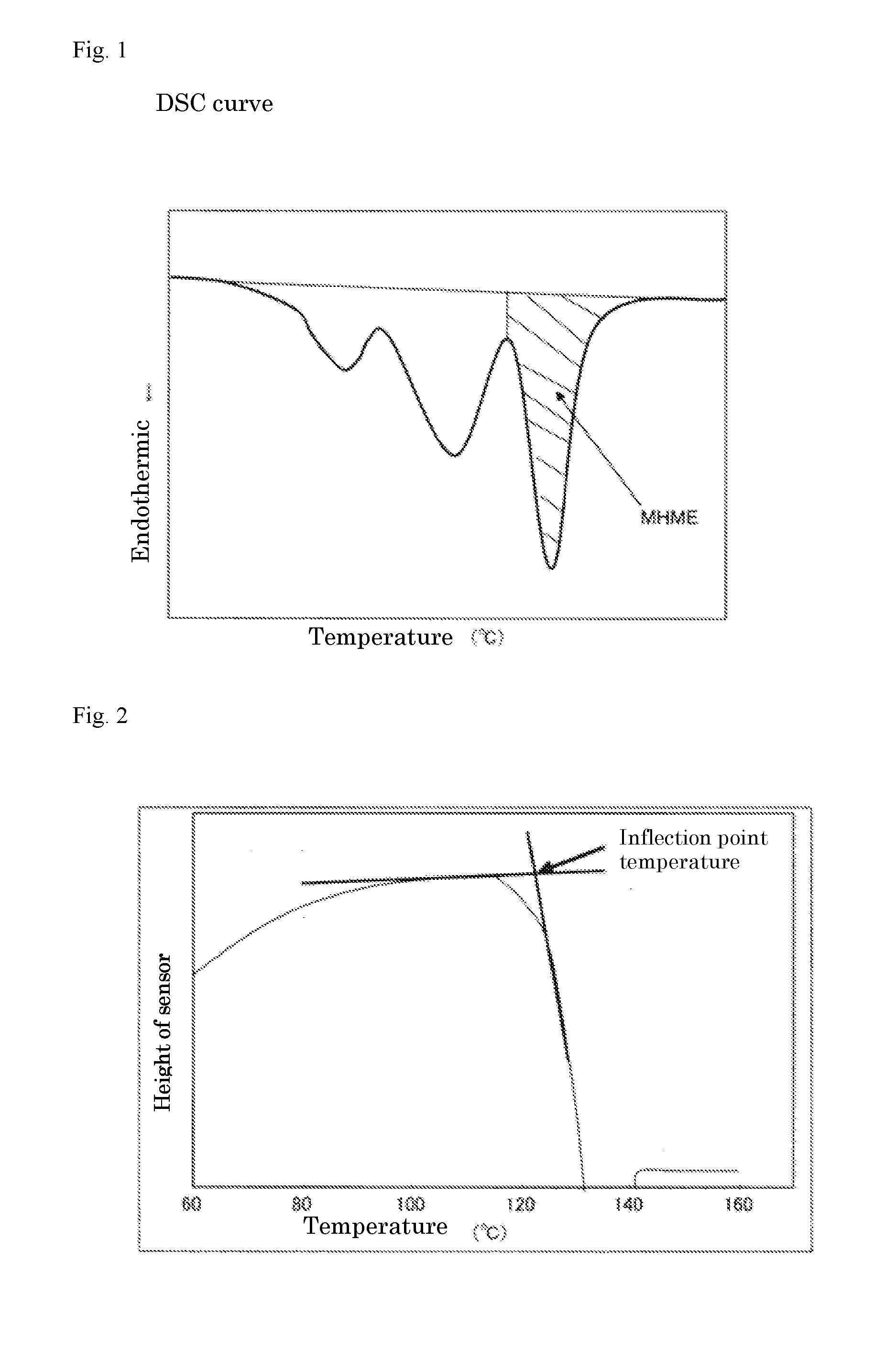Pre-expanded polypropylene resin particle, and method for production thereof
a polypropylene resin and polypropylene technology, applied in the field of pre-expanded polypropylene resin particles, can solve the problems of deterioration in productivity, frequent miscutting and breakage of strands, and low productivity
- Summary
- Abstract
- Description
- Claims
- Application Information
AI Technical Summary
Benefits of technology
Problems solved by technology
Method used
Image
Examples
example 1
[0054]A melted mixture of 100 wt parts of a polypropylene resin (ethylene-propylene random copolymer, Tm: 146° C., MI: 6 g / 10 minute, comonomer content: 3 wt %), 5 wt parts of a polyethylene resin having a melt viscosity of 265 mPa·s, and 0.01 wt part of a nucleating agent talc was extruded out of a die having a nozzle diameter of 0.6 mm and a land length of 3 mm connected to the tip of the extruder into water at a water temperature of 80° C. and a water pressure of 0.1 MPa (gauge pressure) by using a twin screw extruder, and the extruded resin mixture was into fragments with a revolving cutter blade, to give polypropylene resin particles having a particle weight of 1.2 mg / particle. The resin temperature, as indicated by the resin temperature gauge connected to the die inlet unit of the extruder, was 232° C. Subsequently, 100 wt parts of the polypropylene resin particle obtained, 150 wt parts of water, 1.21 wt parts of basic tribasic calcium phosphate and 0.03 wt part of sodium dode...
example 2
[0056]Polypropylene resin particles were prepared in a manner similar to Example 1, except that the addition amount of the polyethylene resin was changed to 10 wt parts and except the condition shown in Table 1, and pre-expanded polypropylene resin particles were prepared from the polypropylene resin particles. The pre-expanded polypropylene resin particles obtained had a bulk density of 31 g / L, a MHME of 16.6 J / g, and a cell diameter of 290 μm. An in-mold expansion-molded article was prepared from the pre-expanded polypropylene resin particles in a manner similar to Example 1 and the lowest molding steam pressure and the apparent density of the molding were determined.
example 3
[0057]Polypropylene resin particles were prepared in a manner similar to Example 1, except that the addition amount of the polyethylene resin was changed to 20 wt parts and except the condition shown in Table 1, and pre-expanded polypropylene resin particles were prepared from the polypropylene resin particles. The pre-expanded polypropylene resin particles obtained had a bulk density of 30 g / L, a MHME of 16.2 J / g, and a cell diameter of 330 μm. An in-mold expansion-molded article was prepared from the pre-expanded polypropylene resin particles in a manner similar to Example 1 and the lowest molding steam pressure and the apparent density of the molding were determined.
PUM
| Property | Measurement | Unit |
|---|---|---|
| melt viscosity | aaaaa | aaaaa |
| particle weight | aaaaa | aaaaa |
| melt viscosity | aaaaa | aaaaa |
Abstract
Description
Claims
Application Information
 Login to View More
Login to View More - R&D
- Intellectual Property
- Life Sciences
- Materials
- Tech Scout
- Unparalleled Data Quality
- Higher Quality Content
- 60% Fewer Hallucinations
Browse by: Latest US Patents, China's latest patents, Technical Efficacy Thesaurus, Application Domain, Technology Topic, Popular Technical Reports.
© 2025 PatSnap. All rights reserved.Legal|Privacy policy|Modern Slavery Act Transparency Statement|Sitemap|About US| Contact US: help@patsnap.com

